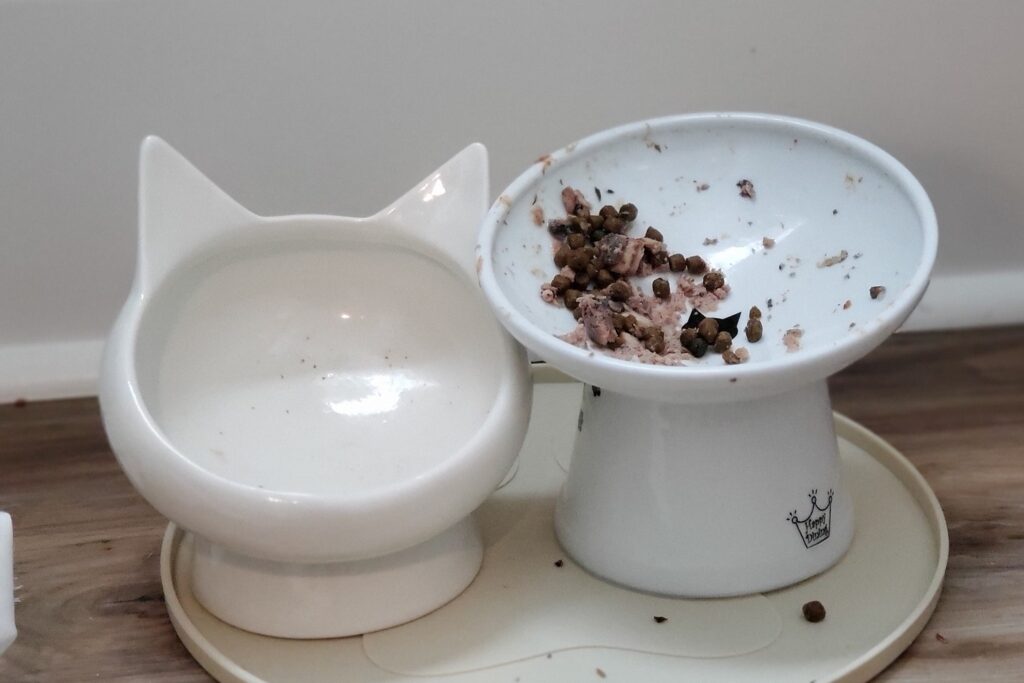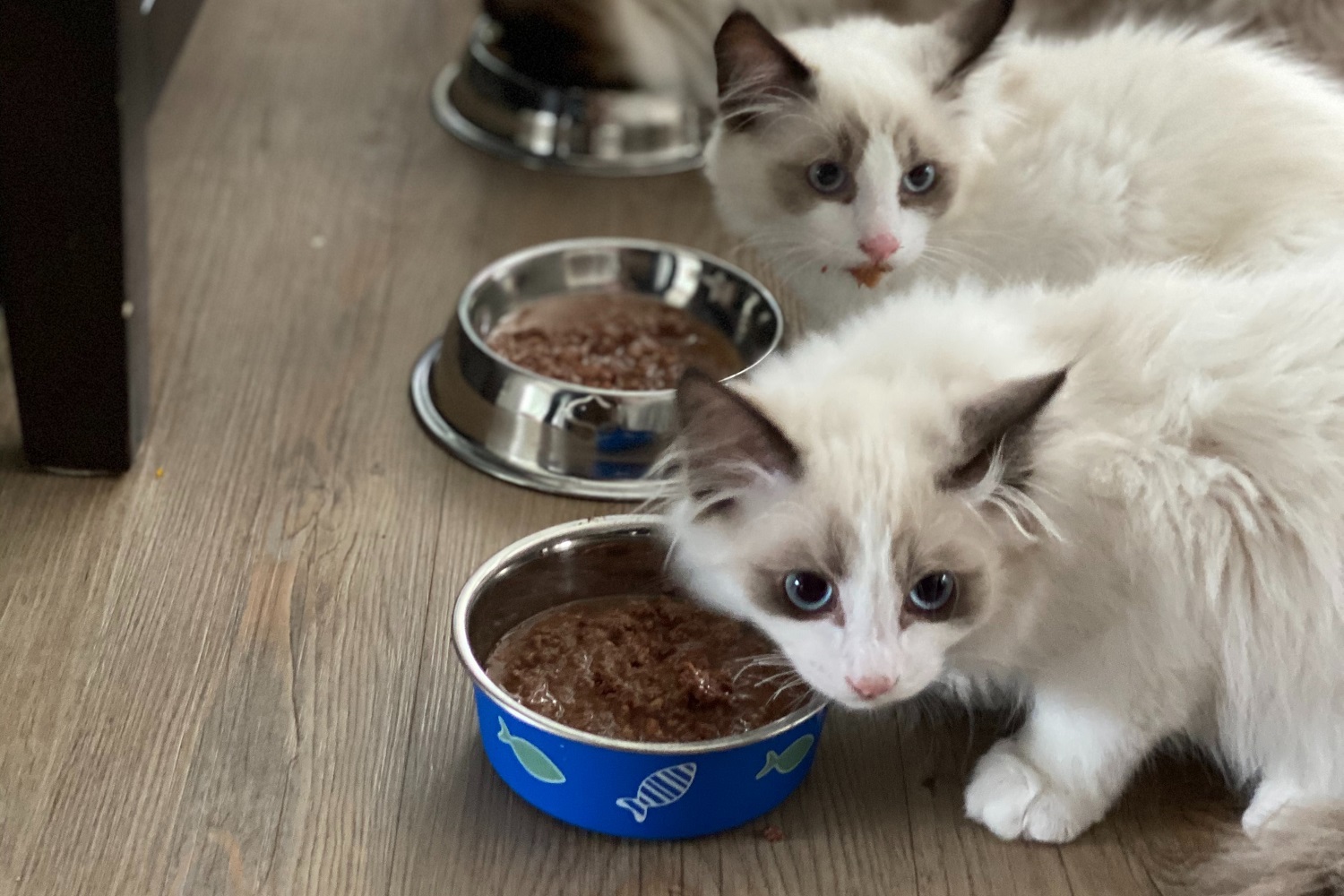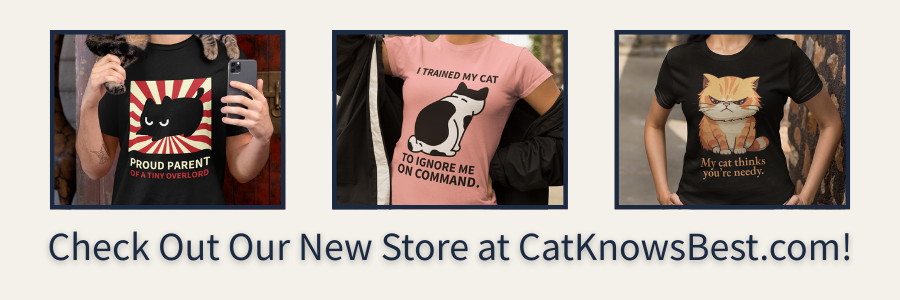Wet cat food may be your feline’s favorite gourmet treat, but it is not something you can leave out all day like a fancy centerpiece. Wet cat food spoils quickly, and while your cat might not be picky about freshness, their stomach definitely is.
Leaving wet food out for too long can lead to bacteria growth, unpleasant smells, and the kind of mealtime regret no pet owner wants to deal with. Whether you are free-feeding or just forgot to toss out the leftovers, knowing how long wet food can safely sit out is an important part of keeping your cat healthy and your home from smelling like a fish market.
Why Wet Cat Food Spoils So Quickly
Wet cat food is made with high-moisture ingredients like meat, broth, and gravy, which makes it more appealing to your cat and easier to digest. Unfortunately, that same moisture also makes it the perfect breeding ground for bacteria.
Once the can is opened or the pouch is peeled back, air exposure and room temperature give bacteria the green light to multiply. Unlike dry food, which can hang out in a bowl for a while without trouble, wet food starts to break down much faster.
Key spoilage factors include:
- Room temperature (especially if it is warm or humid)
- Exposure to air and bacteria
- Time since opening
- Whether the food was licked or partially eaten
In short, if it is sitting out and looking sad, it probably is.
Safe Time Limits for Wet Cat Food
So how long is too long?
Most veterinarians and pet food manufacturers recommend that wet cat food should not sit out for more than one to two hours at room temperature. After that, bacteria can begin to multiply, and the food starts to lose both freshness and safety.
In cooler environments, you might stretch this limit slightly, but in warm conditions, food can spoil even faster. If it has been sitting out for more than two hours, especially if your cat has already taken a few bites, it is best to toss it and start fresh.
General time guidelines:
- 1 to 2 hours in most indoor conditions
- Less than 1 hour in hot or humid environments
- Refrigerated leftovers should be used within 24 to 48 hours
If you are unsure how long it has been sitting out, go with the safe option and discard it. Cats have sensitive stomachs, and spoiled food can cause vomiting, diarrhea, or worse.
Signs That Wet Cat Food Has Gone Bad
Even before you hit the time limit, there are ways to tell if wet food has started to spoil. Use your senses and trust your instincts. If it does not look or smell right, your cat probably thinks the same.
Watch out for:
- A sour, rancid, or otherwise “off” smell
- A slimy or sticky texture on the surface
- Mold, discoloration, or separation of ingredients
- Flies or insects hanging around the bowl
- Your cat sniffing and walking away with a look of betrayal
Spoiled food does not always look dramatically different, but the smell is usually the giveaway. If it makes you wrinkle your nose, do not risk it.
How to Store Wet Cat Food Safely
You can still serve wet food while keeping it safe. A few storage habits go a long way in preserving freshness and reducing waste.
Serve in smaller portions
Rather than filling the bowl and hoping for the best, try offering smaller portions more frequently. You can always add more if needed, but it is harder to un-spoil food once it has been left out.
Refrigerate leftovers promptly
If your cat does not finish their meal within 30 minutes, scoop the rest into an airtight container and refrigerate it. Label the container with the date to keep track.
Warm it up gently
Cats prefer food at room temperature. If you are serving refrigerated leftovers, microwave the food for a few seconds to take the chill off. Stir and test the temperature before serving.
Use clean dishes
Always serve wet food in clean bowls. Dirty dishes can harbor bacteria that speed up spoilage or upset your cat’s stomach.
Avoid double dipping
If your cat licks the food and then walks away, bacteria from their mouth may start breaking down the food. Discard anything they did not finish and start fresh at the next mealtime.

Oh, great, wet cat food left out all day again! Just what I wanted… a smorgasbord of stale, bacteria-infested mush. Who wouldn’t love a side of food poisoning with their dinner? I can hardly contain my excitement. Thanks for putting so much thought into my well-being! #GourmetKittyGoneWrong #SpoiledFoodForASpoiledCat #WhoNeedsFreshMealsAnyway #TheLitterBoxIsNotGoingToBePretty
Winston
Is It Ever Okay to Free Feed Wet Food?
Unlike dry kibble, wet cat food is not suited for free feeding. Leaving it out for hours while your cat grazes increases the risk of spoilage, contamination, and food waste.
If your cat is a slow eater or tends to nibble throughout the day, consider switching to a feeding schedule with smaller, timed meals. This helps you monitor their appetite, prevent overfeeding, and keep their food safe and fresh.
You can also explore automatic feeders with ice packs or cooling inserts designed to keep wet food cool for longer, but these should still be used cautiously.
Final Thoughts: Freshness Always Wins at Mealtime
Cats can be picky, but when it comes to wet food safety, they rely on you to make the right call. Leaving wet cat food out too long opens the door to spoilage, bacteria, and avoidable tummy troubles.
Stick to the two-hour rule, refrigerate leftovers promptly, and keep your serving routine clean and simple. A little attention goes a long way in keeping your cat’s meals safe and satisfying.
Remember, fresh food means fewer messes, fewer smells, and a much happier cat curled up on the couch with a full belly.
Sources:
Safe Handling of Pet Food https://www.fda.gov/animal-veterinary/animal-health-literacy/pet-food-safety
Storing Wet Cat Food Properly https://www.petmd.com/cat/nutrition/storing-cat-food-right-way
Feeding Guidelines for Wet Food https://www.humanesociety.org/resources/feeding-your-cat
Wet Cat Food Storage Tips https://vcahospitals.com/know-your-pet/storing-pet-food-safely
Recent Posts
Your Cat Might Be a Furry Little Healer… or at Least a Fuzzy Alarm System If you’ve ever had your cat suddenly become extra clingy when you’re under the weather, you’re not alone. From...
Cats are experts at hiding things, socks under furniture, their disdain for your playlist, and, unfortunately, symptoms of illness. In the wild, showing weakness could make them a target, so even...


